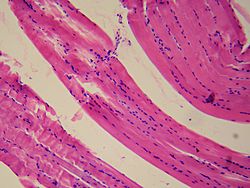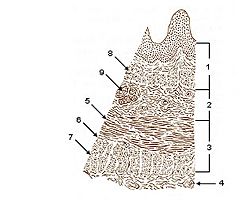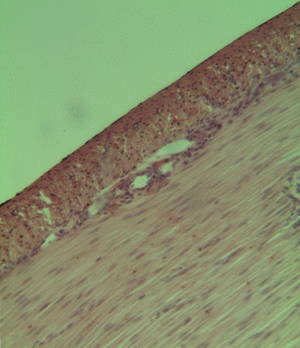Smooth muscle facts for kids
Quick facts for kids Smooth muscle tissues |
|
|---|---|
 |
|
 |
|
| Layers of Esophageal Wall: | |
| Latin | textus muscularis levis; textus muscularis nonstriatus |
Smooth muscle is an involuntary non-striated muscle. It is divided into two subgroups; the single-unit (unitary) and multiunit smooth muscle. Within single-unit cells, the whole bundle or sheet contracts as a syncytium.
Smooth muscle cells are found in the walls of hollow organs, including the stomach, intestines, urinary bladder and uterus, and in the walls of passageways, such as the arteries and veins of the circulatory system, and the tracts of the respiratory, urinary, and reproductive systems. These cells are also present in the eyes and are able to change the size of the iris and alter the shape of the lens. In the skin, smooth muscle cells cause hair to stand erect in response to cold temperature or fear.
Images for kids
See also
 In Spanish: Músculo liso para niños
In Spanish: Músculo liso para niños



